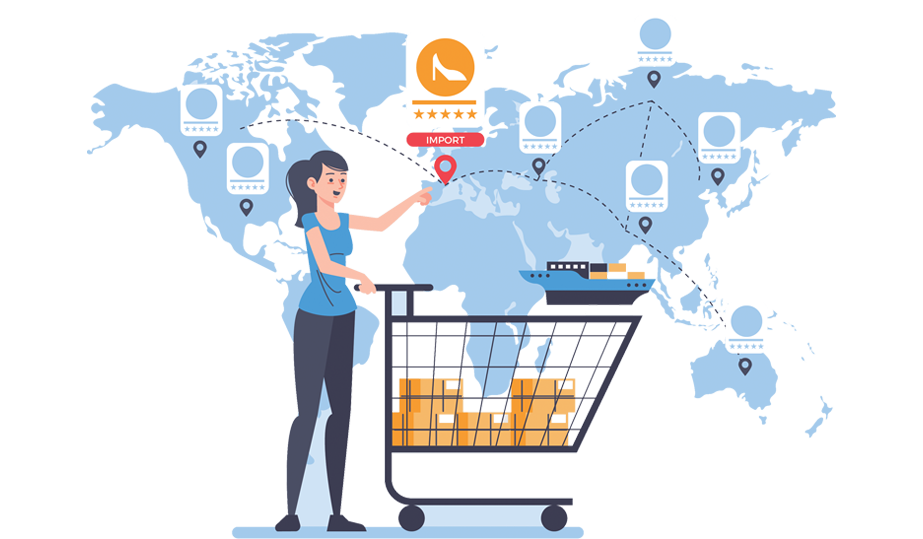We use cookies to make your experience better. To comply with the new e-Privacy directive, we need to ask for your consent to set the cookies. Learn more.
Headless commerce development refers to the approach of decoupling the front-end and back-end layers of an e-commerce application. In a traditional commerce application, the front-end and back-end are tightly coupled, meaning the user interface (UI) and the underlying e-commerce functionality are closely integrated.
In a headless commerce architecture, the front-end and back-end are separated, allowing more flexibility and scalability. The back-end, which includes the e-commerce functionality such as inventory management, payment processing, and order fulfillment, serves as an API (Application Programming Interface) that can be accessed by various front-end applications.
Here are some key aspects and benefits of headless commerce development

-
Front-end Flexibility: With a headless approach, you have the freedom to develop the front-end using any technology stack or platform. This enables you to create engaging and customized user experiences across different channels like web, mobile, voice assistants, IoT devices, and more.
-
Enhanced User Experience: Headless architecture allows you to create seamless and personalized user experiences across different channels and devices. You can tailor the UI to specific customer segments, optimize for different screen sizes, and leverage emerging technologies such as voice assistants, augmented reality, or chatbots. This flexibility in design and interaction leads to improved customer engagement and satisfaction.
-
Omnichannel Commerce: Headless commerce enables businesses to deliver consistent experiences across multiple touchpoints. You can easily integrate your e-commerce functionality into different platforms, applications, or digital touchpoints, allowing customers to interact with your brand wherever they prefer.
-
Scalability and Performance: By separating the front-end and back-end layers, you can independently scale and optimize each component based on its specific requirements. This improves overall performance and allows you to handle high traffic loads more effectively.
-
Faster Iterations: Headless architecture promotes faster development and iterations by decoupling the UI from the back-end logic. Front-end developers can work independently, making changes and improvements without affecting the underlying e-commerce functionality.
-
Third-Party Integrations: Headless commerce makes it easier to integrate with third-party services and APIs. You can leverage specialized services for various aspects of your e-commerce operations, such as payment gateways, shipping providers, marketing tools, analytics platforms, and more.
-
Future-Proofing:By adopting a headless approach, you can future-proof your e-commerce infrastructure. As technology evolves and new channels emerge, you can adapt and integrate them seamlessly into your system without significant redevelopment. This adaptability allows you to stay ahead of the competition and meet the ever-changing needs of your customers.
Implementing Headless Commerce Approach
-
API-First Approach: Headless commerce relies on APIs (Application Programming Interfaces) to enable communication between the front-end and back-end systems. Adopting an API-first approach ensures the development of robust and scalable APIs that provide seamless data exchange.
-
Microservices Architecture: Breaking down the commerce functionality into microservices allows for greater flexibility, scalability, and independent deployment of specific features. Each microservice focuses on a specific business capability, such as product catalog, inventory management, or payment processing.
-
Front-end Technologies: Headless commerce allows businesses to leverage a wide range of front-end technologies such as React, Angular, Vue.js, or native mobile app frameworks. This flexibility enables the creation of engaging and interactive user interfaces tailored to different platforms.
-
Integration and Ecosystem: Headless commerce requires seamless integration with various systems, including content management systems (CMS), customer relationship management (CRM) platforms, payment gateways, and analytics tools. Choosing compatible and extensible technologies ensures a cohesive ecosystem.

Headless commerce development provides businesses with the agility, flexibility, and scalability needed to deliver exceptional customer experiences. By decoupling the front-end presentation layer from the back-end commerce functionality, businesses can create personalized, omnichannel experiences that adapt to evolving customer needs. While headless commerce presents challenges, the benefits far outweigh the complexities, making it a compelling approach for modern commerce development.
Ready to embrace the future of eCommerce with Headless Commerce?
Contact us now for a free consultation and discover how our headless commerce development services can revolutionize your online business!

 Register
Register Sign in
Sign in




